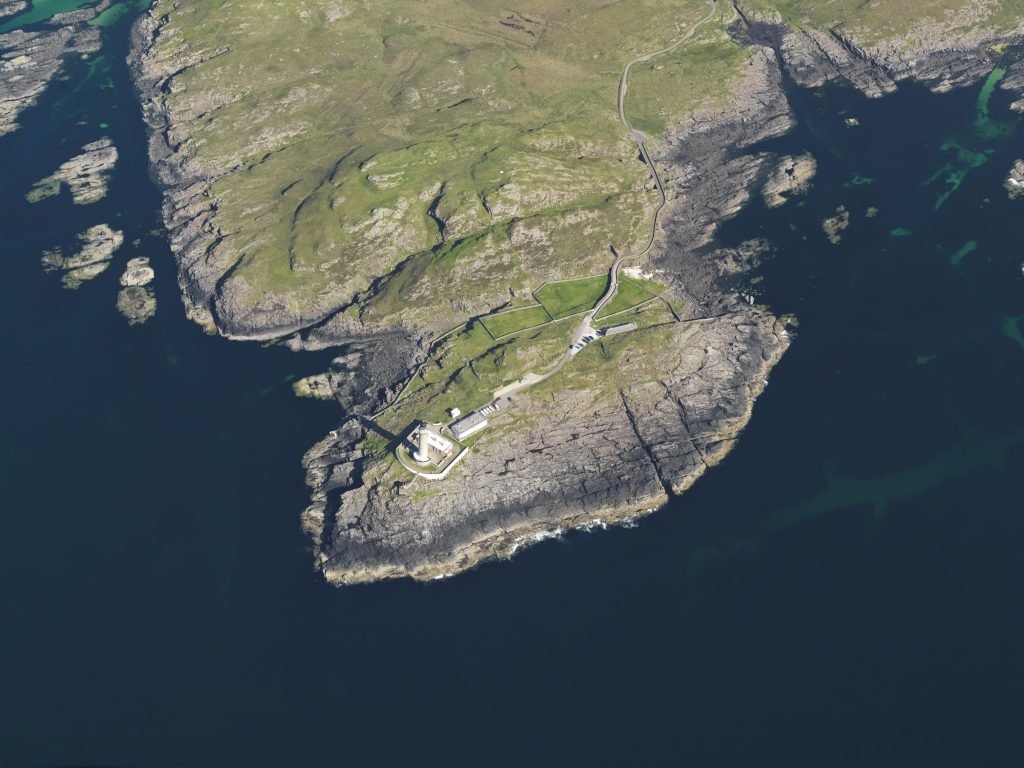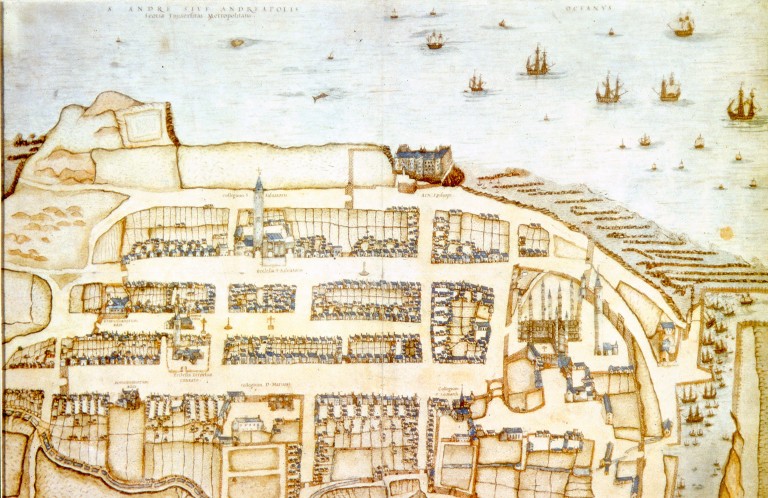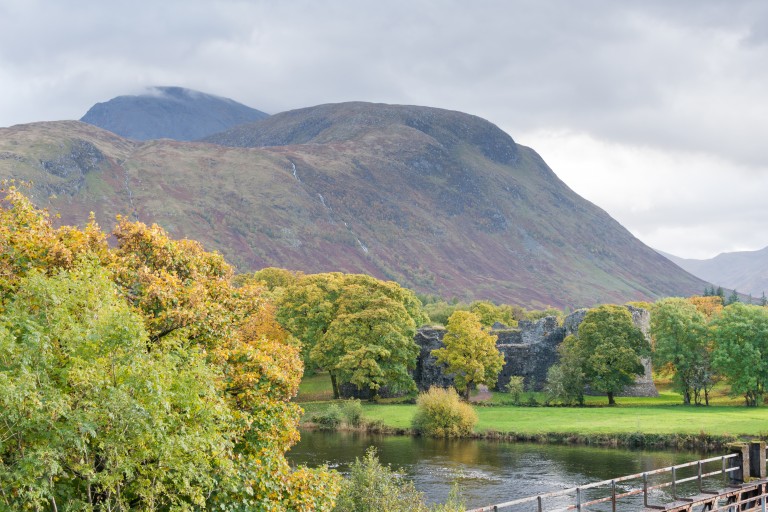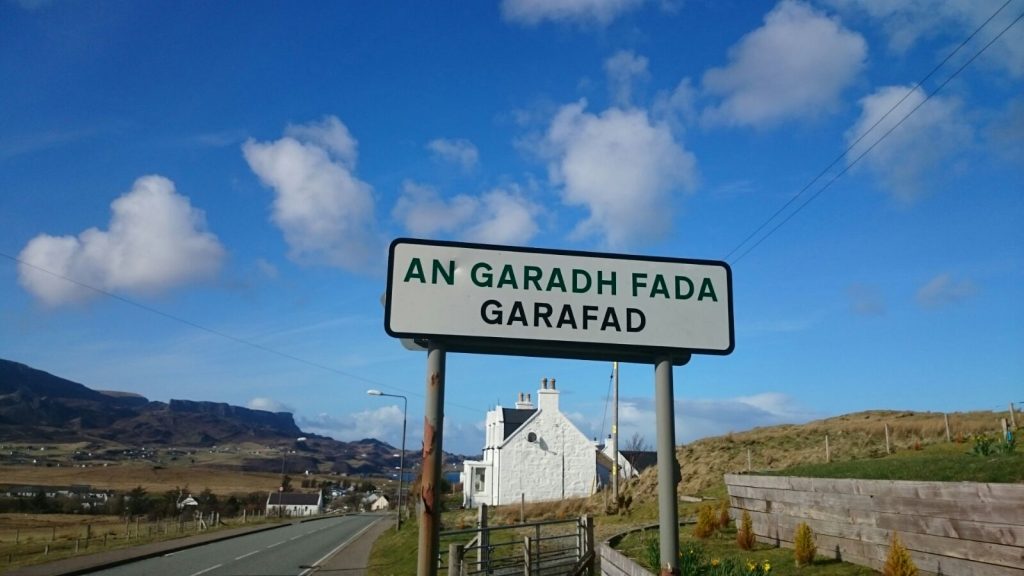Did you know that some of the place-names you see on modern maps were used, largely unchanged, over a thousand years ago? This short piece looks at a handful of the earliest Gaelic names on record in Scotland which have lasted up to this day.
Ardnamurchan
The English form comes from the Gaelic Àird nam Murchan meaning ‘the height of the seals’. Although nowadays people consider this to be the whole peninsula, it originally meant only the point where the lighthouse is now. The word murchan is from muir ‘sea’ and cù ‘dog’ where sea-dog is a word for either a seal or an otter.

The Point of Ardnamurchan and the Ardnamurchan lighthouse
© Crown Copyright: Historic Environment Scotland.
This name is however mentioned three times in the Life of St Columba, written round 700 AD. In that book, it is referred to as Artda Muirchol (or similar). As you can see the end of the name is different from the modern form, written here –chol. The meaning of this word is not clear, but may be Gaelic col ‘sin, wickedness’ referring to acts of piracy or wrecking. So, the name may have originally meant ‘the height of the sea-sins’.
St. Andrews
Although nowadays this place is named after the saint, centuries ago it was called Cinrigh Monai. This is as it stands a Gaelic name, although it has an earlier Pictish one within it. The first syllable is Gaelic ceann followed by a Pictish place-name Rymont and therefore means ‘the end or head of Rymont’. This second word was Gaelicised as *Rìgh monadh ‘king’s muir’.

St Andrews
By the tenth century the word ceann had come to be understood as cill ‘church’, likely because of St Andrews famous cathedral. The second word also evolved into Rìmhinn as if this were a saint’s name. i.e. ‘the church of Rìmhinn’. Although not on maps, the name is still in use by Gaelic speakers to this day as Cill Rìmhinn.
Ederline
It is not only names of large towns, lochs and mountains that can be ancient. While those names are more likely to last through the ages, sometimes the names of smaller features can last as well. The Annals of Ulster tell us that in 736 a battle was fought between Dal Riata and the Picts at a place called Etar Linddu. While this name has not been identified with absolute certainly, it is most likely to be modern Ederline at the south end of Loch Awe in Argyll. This is in Gaelic Eadar Linne meaning ‘between pools’ and most likely relates to a crossing place between Loch Awe and what is now called Loch Ederline.

An icehouse in Elderline.
© Crown Copyright: Historic Environment Scotland.
Loch Lochy
This loch is mentioned twice, once in the Annals of Ulster in Latin as stagnum Loogde in 729 and in the Life of Saint Columba as Stagnum Lochdae. Stagnum is a Latin word which is probably a translation of ‘loch’. The author of the Life of Saint Columba explains the name as that ‘which in Latin can be called the Black Goddess’. The ‘goddess’ part is likely a folk-etymology however, although it seems that lòch was an early Gaelic word meaning a particular shade of ‘black’, possibly ‘reflective black’. This fits with the modern Gaelic form Loch Lòchaidh. The vowel ending added to lòch is common in river-names, and it is likely that the name River Lochy, which is fed by Loch Lochy, came first.

River Lochy and Ben Nevis
Further Reading
- W.J. Watson. The history of the Celtic place-names of Scotland. Birlinn, 1926, repr. 2004.
- http://fife-placenames.glasgow.ac.uk
- http://www.ucc.ie/celt/published/G100001A/index.html
- King Jacob, 2005, ‘”Lochy” names and Adomnán’s Nigra Dea’, Nomina 28, 69‒91.

 Jacob King is a researcher for Ainmean Àite na h-Alba, a body responsible for finding correct authoritative Gaelic forms of place-names. He writes a weekly column about Gaelic place-names for the Scotsman.
Jacob King is a researcher for Ainmean Àite na h-Alba, a body responsible for finding correct authoritative Gaelic forms of place-names. He writes a weekly column about Gaelic place-names for the Scotsman.
For more information on Gaelic place-names please visit www.gaelicplacenames.org.

